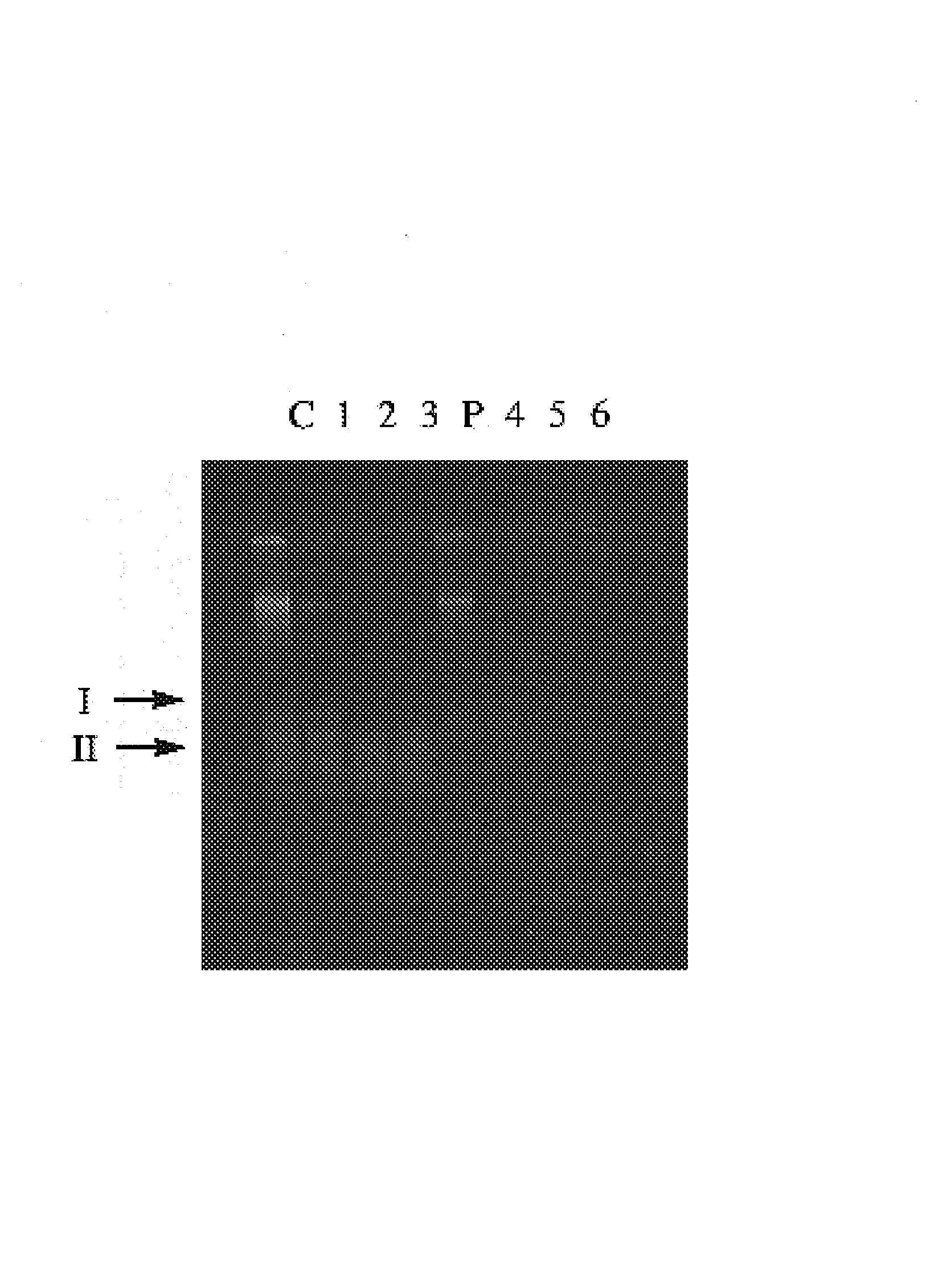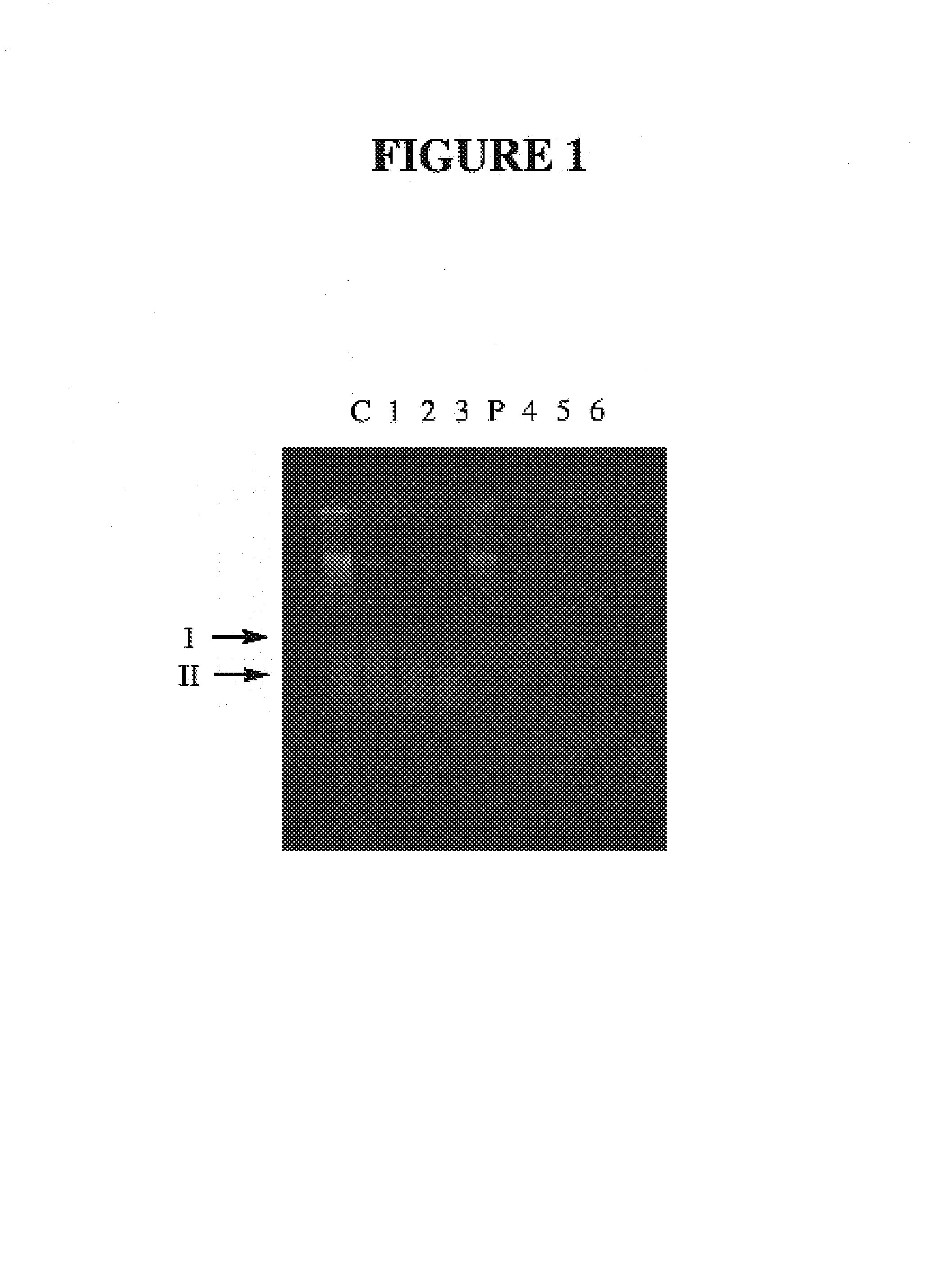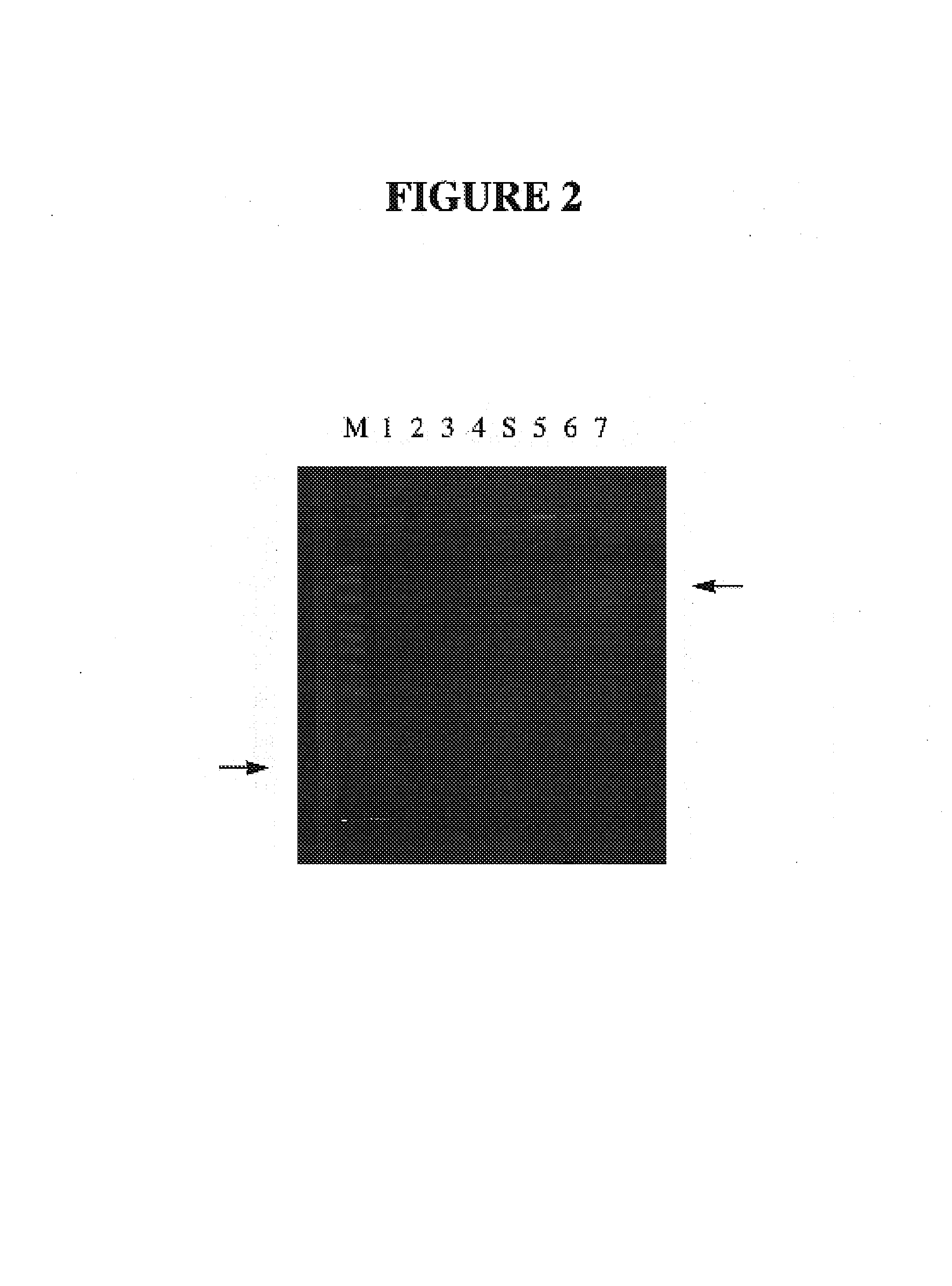Microbial production of nuclease resistant DNA, RNA, and oligo mixtures
a technology of oligo mixtures and nuclease, which is applied in the field of microbial production of nuclease resistant dna, rna, and oligo mixtures, can solve the problems of high cost and widespread use of enzymatic synthesis
- Summary
- Abstract
- Description
- Claims
- Application Information
AI Technical Summary
Problems solved by technology
Method used
Image
Examples
example i
Method to Generate Antisense Oligo Mixtures
[0020]The propagation of M13 phage in thio-phosphate containing media first requires the cultivation of the appropriate host strain such as JM109 which requires minimal media to select for the F′ pillus. Minimal plates are prepared as follows: bactoagar, 10.5 g / L; K2HPO4 3H2O, 4.5 g / L; KH2PO4, 4.5 g / L; (NH4)2SO4, 1 g / L; sodium citrate 2H2O, 0.5 g / L; Adjust pH to 7.4 and autoclave. Then add the following: MgSO4.7H2O, 0.2 g / L (sterilized separately as a conc. solution); (thiamine HCL, 5 ug / L; glucose, 4 g / L sterilized separately by filtration). Glucose can also be sterilized by autoclaving separately. FeCl2 (500 ug / L) can also be added as needed.
[0021]Thio-phosphate containing media is prepared similarly as minimal media except that the inorganic phosphates are replaced with thio-phosphate (Na3SPO3.XH2O) 10–15 g / L and KCL (1.5 g / L). Thio-phosphate contains variable amounts of water (10–15 per molecule) not included in molecular weight calcula...
example ii
In Vivo Synthesis of Phosphorothioate Containing RNA.
[0029]Growth of cells in thio-phosphate containing media results in the incorporation of thio-phosphate nucleotides into RNA as well as DNA. The resultant RNAs accumulate and are protected from degradation both in vivo and in vitro during subsequent isolation of total RNA. Both E. coli and yeast are easily grown in minimal medias with thio-phosphate as the only source of phosphorus. S. cerevisiae (Baker's yeast, ATTC #7754) grow in essential minimal media with no phosphates (EMM [Contents / L: 3 g phthalic Acid, K+, 5 g NH4Cl, 20 g dextrose, 1.05 g MgCl2, 6H2O, 14.7 mg CaCl2.2H2O, 1 g KCl, 0.04 g Na2SO4, 1 mg panthothenic acid, 10 mg nicotinic acid, 10 mg myo-inositol, 1 mg biotin, 0.5 mg boric acid, 0.4 mg MnSO4, 0.4 mg ZnSO4.7H2O, 0.2 mg FeCl2.6H2O, 40 ug molybdic, 0.1 mg KI, 40 ug CuSO4.5H2O, 1 mg citric acid], BIO101) and supplemented with thio-phosphate (1–10 g / L) as well as each of the following at 50 mg / L adenine, histidine, ...
example iii
Incorporation of Thio-Phosphate into the DNA of a Complex Organism
[0031]Thio-phosphate can also be utilized by whole animals and / or complex tissues. Carassius auratus incorporates thio-phosphate into the DNA of intestinal cells; these cells are known to turnover in adults. Fish can be maintained in distilled water with NovAqua and AmQuel conditioners (U.S. Pat. No. 4,666,610). Goldfish flakes are also added for food. Normal phosphate levels in the aquarium are less than 1 mg / L (Hanna Phosphate Test Kit; Hanna Instruments). Fish are transferred to 100 ml of conditioned media with up to 250 mg / L of thio-phosphate added. No adverse reactions are seen in fish incubated for up to two days. Fresh media is prepared daily. Fish are sacrificed and DNA prepared from intestinal cells using DNAzol™ (Molecular Research Center, Ohio). The DNA samples are then tested for resistance to DNase digestion. Samples are incubated in a 50 ul r×n with ˜1 ug of DNA and 0.5 units of DNase for 0, 5, 10, 15 mi...
PUM
| Property | Measurement | Unit |
|---|---|---|
| concentration | aaaaa | aaaaa |
| pH | aaaaa | aaaaa |
| pH | aaaaa | aaaaa |
Abstract
Description
Claims
Application Information
 Login to View More
Login to View More - R&D
- Intellectual Property
- Life Sciences
- Materials
- Tech Scout
- Unparalleled Data Quality
- Higher Quality Content
- 60% Fewer Hallucinations
Browse by: Latest US Patents, China's latest patents, Technical Efficacy Thesaurus, Application Domain, Technology Topic, Popular Technical Reports.
© 2025 PatSnap. All rights reserved.Legal|Privacy policy|Modern Slavery Act Transparency Statement|Sitemap|About US| Contact US: help@patsnap.com



